Brussels is an underrated gem of a European capital city. As the headquarters of the European Union and the capital of Belgium, it seamlessly blends historical charm with modern cosmopolitan flair. Whether you only have a day or a whole week to spend in the city, Brussels has something to offer every traveler.
| Activity | Description |
|---|---|
| Stroll Through the Grand Place and Old Town | Visit the stunning Grand Place and explore Old Town. |
| Marvel at Masterpieces in the Musées Royaux Des Beaux-Arts | Explore world-class collections of art. |
| Tour the Historic Cinquantenaire Museum Park | Visit museums celebrating Belgian independence. |
| Experience Belgian Cafe Culture | Enjoy coffee culture at charming cafes. |
| Sample Gourmet Chocolate Creations | Taste delicious Belgian chocolates. |
| Tour Brussels’ Beer Culture | Explore breweries and sample Belgian beers. |
| Indulge in Belgian Fries, Waffles, and More | Try Belgian street food, including fries and waffles. |
| See Surreal Artworks at the Magritte Museum | Admire René Magritte’s surreal paintings. |
| See the Atomium | Explore the retro-futuristic emblem of Brussels. |
| Explore Brussels’ Multicultural Neighborhoods | Discover diverse neighborhoods with unique cultures. |
As we look ahead to 2024, there will be new openings, exhibits, and events happening throughout Brussels for visitors to enjoy. From world-class museums and festivals to hip neighborhoods full of shops, cafés, and street art, Brussels continues to capture the hearts of those who get to know it.
For first-time or returning visitors looking to make the most out of a 2024 trip, read on for our recommendations of the top 15 things to do in Brussels.
Stroll Through the Grand Place and Old Town

Name and Location: Grand Place and Old Town, Heart of Downtown Brussels
History and Significance: The stunning Grand Place is Brussels’ most iconic sight, lined by Gothic, Baroque and Gold Louis architecture. Surrounding winding alleys also showcase medieval sights. Together they comprise the historic central area originating Brussels. In 1998 it received UNESCO World Heritage recognition.
What to Expect: Visitors soak in intricate ornamented buildings, golden gilded facades, lively restaurants and chocolate shops intermingled with old world sights like the 15th century Town Hall. Don’t miss the Grand Place at night when lighting illuminates the dazzling details. The area offers glimpses into Brussels beginnings.
Visitor Information: Always open. Getting around is walkable. Guided tours available. Surrounding streets like Rue du Marche connect to key sites like Manneken Pis statue.
No visit to Brussels is complete without seeing the stunning Grand Place. This bustling square is surrounded by ornate guildhalls and the impressive Brussels Town Hall. It even earned a spot on the UNESCO World Heritage list for its immense architectural beauty. Go shopping for chocolate, waffles, beer, and lace in the narrow cobblestone streets winding out from the Grand Place into Brussels’ Old Town neighborhoods.
Soak up the charm of Îlot Sacré’s art galleries and cafés or discover daily local life in the Dansaert District. Don’t forget to look up and admire the intricate details embellishing the traditional buildings from medieval times blending seamlessly with trendy modern shops and restaurants.
Make time to pass by the famous Manneken Pis statue depicting Brussels’ whimsical mascot – a little boy relieving himself into the fountain below. While it’s smaller than you might expect, it encapsulates the city’s quirky sense of humor.
Marvel at Masterpieces in the Musées Royaux Des Beaux-Arts
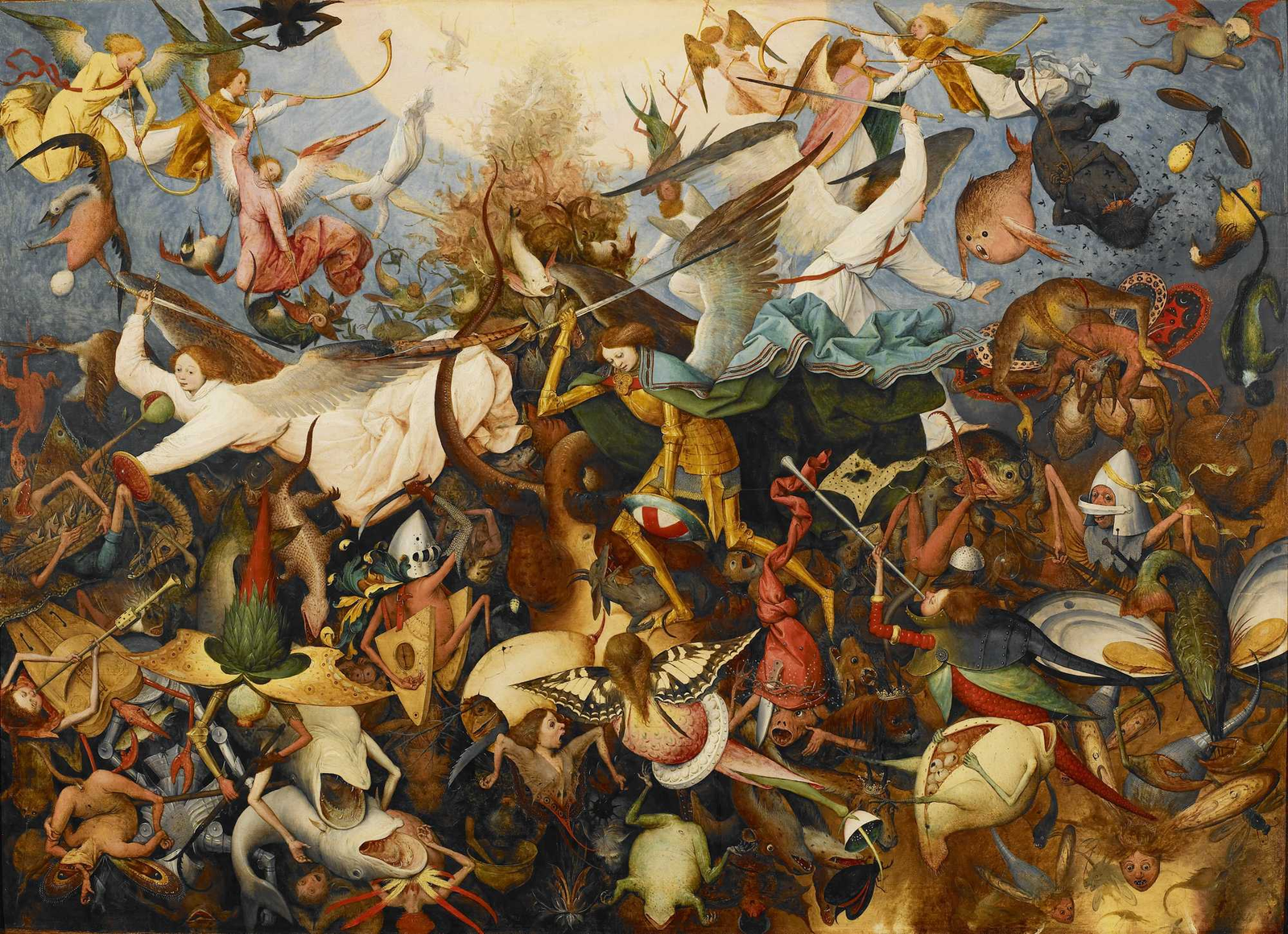
Name and Location: Musées Royaux des Beaux-Arts, Rue de la Régence 3
History and Significance: This renowned museum dates to the 19th century and occupies a grand historic venue. Its collections extensively survey Belgian art spanning the 15th to 21st centuries including icon Superb works by Bruegel, Rubens, Bosch, Magritte and more. The museum holds masterpieces capturing 1000 years of European visual arts.
What to Expect: Visitors view Belgian greatest artists against the backdrop of resplendent architecture. Exhibits include elaborate religious works, revelatory portraiture, realism, surrealism and avant garde movements. An diverse circuits cover interests from sculpture to avant garde trends. Don’t miss the Magritte gallery.
Visitor Information: Open Tues-Sun 10am-5pm. Closed Mondays. Ticket prices: €8-15. Guided tours available. Expect crowds at peak times. Located downtown near the Royal Palace.
Brussels has an impressive fine arts museum scene with world-class collections of Old Master and modern paintings, drawings, and sculptures. The Musées Royaux Des Beaux-Arts is one of the highlights, with a vast collection spanning from Bosch, Bruegel, and Rubens to Renoir, Magritte, and Dalí.
New in 2024, they will open an additional exhibition space focused on modern and contemporary artwork. This complements their Magritte Museum next door, the largest collection of the Belgian surrealist’s works. Brussels was an inspiration and home to René Magritte, so art lovers shouldn’t miss it.
Tour the Historic Cinquantenaire Museum Park
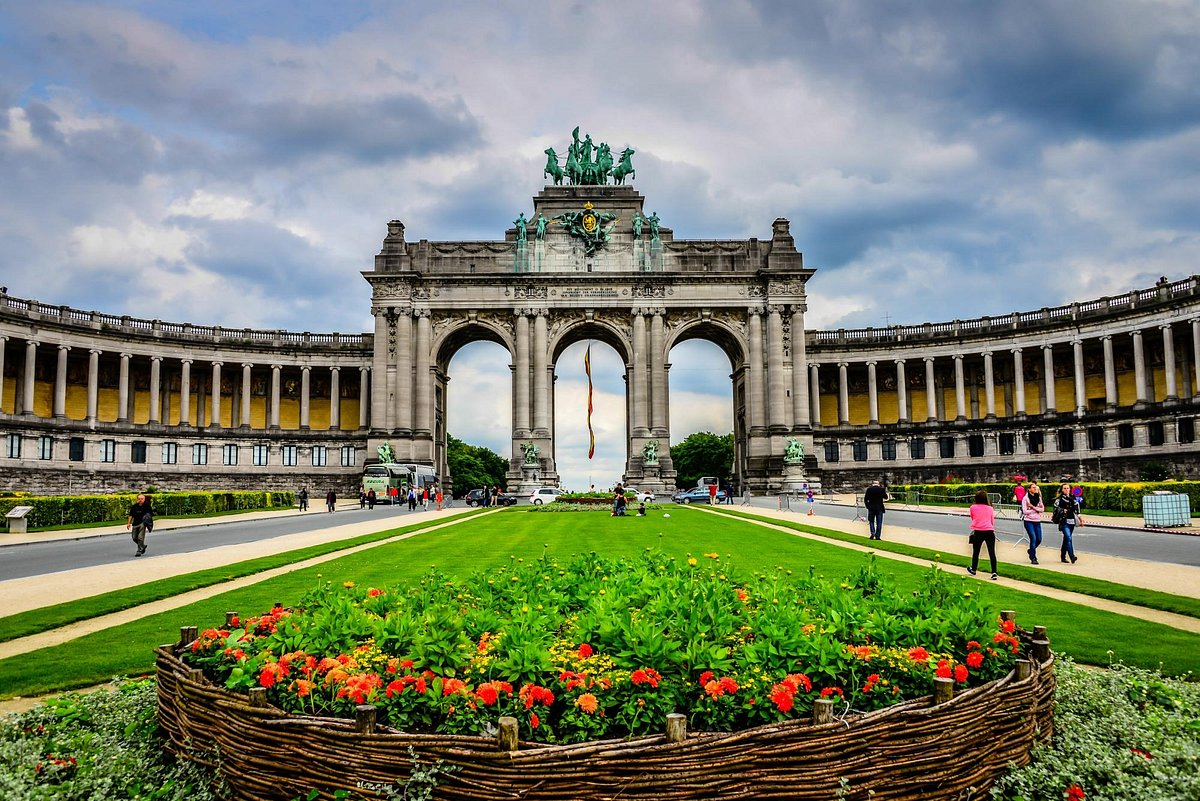
Name and Location: Cinquantenaire Museum Park, Parc du Cinquantenaire 10
History and Significance: The grand Cinquantenaire complex featuring monumental neoclassical arcades and exhibition halls opened in 1880 to mark Belgium’s 50th anniversary. Today this sprawling public park houses some of Brussels’ most important museums at the triumphal Arch of Cinquantenaire. Collections span art, vehicles, military history and more.
What to Expect: Visitors enjoy park strolls gazing at the grandiose architecture. Must-see museums include Autoworld showcasing vintage vehicle collections, Art & History Museum exhibiting European artifacts through the ages plus Royal Army and Military History Museum revealing comprehensive archives.
Visitor Information: Located approx 2 kilometers from city center. Accessible daily. Opening times vary per museum, most €6-10 entry.
Built in 1880 to celebrate the 50th anniversary of Belgian independence, this grandiose complex houses some of Brussels’ best museums all in one place. Architecture buffs will appreciate the soaring arched halls and corridors.
The Royal Museum of Art and History has an extensive collection from Ancient Egypt, Rome and Greece, as well as medieval artifacts. Learn about Europe’s military history at the Royal Museum of the Armed Forces and War Heritage. And AutoWorld has over 400 vintage vehicles on display, including royal automobiles and Formula 1 race cars.
Experience Belgian Cafe Culture
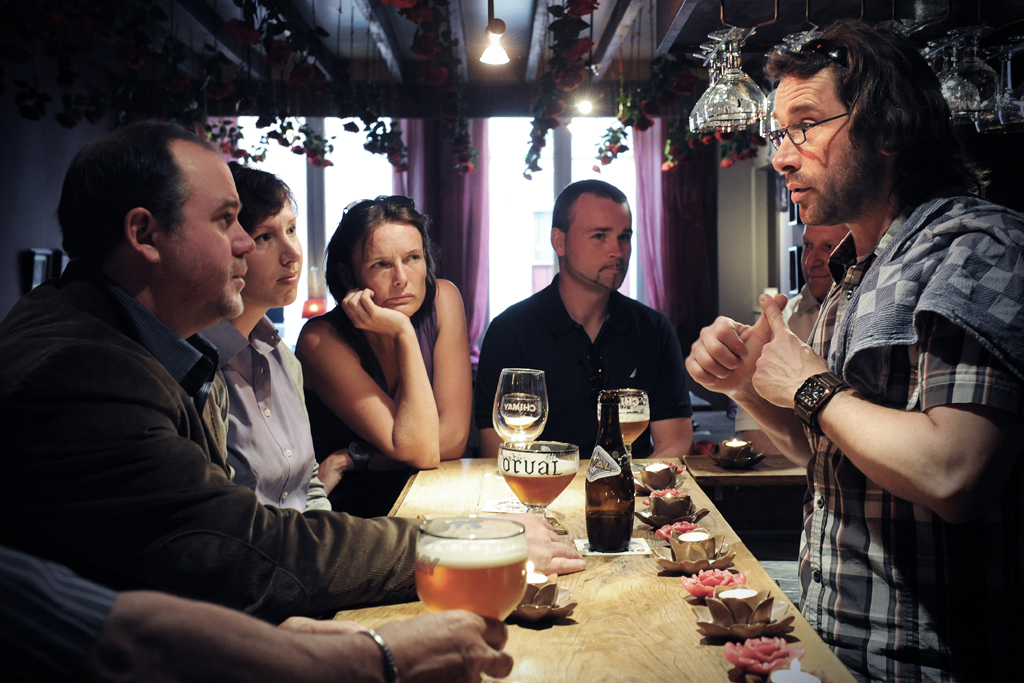
Name and Location: Belgian Cafe Culture, Abundant cafes located citywide
History and Significance: Cozy cafes oozing old world charm have long been staple institutions in Belgian cities. Beyond coffeehouses, locals embrace corner bars, brasseries and estaminets each with distinct cultures. Cafe culture enables communal experiences to discuss ideas, read newspapers or simply watch the world go by over food and drink.
What to Expect: Visitors can duck into history-steeped establishments brimming with character to try artisanal beers or steaming coffees typically accompanied by sweet indulgences like chocolate, waffles or pastries. Cafe culture offers glimpses into Brussels daily life amid quirky decor. Go where the locals go for authenticity.
Visitor Information: Hundreds located citywide. Look for corner venues with vintage styling. Prices reasonable. Custom dictates not to linger excessively during busy times. Tipping not expected but appreciated. Cash only at some small cafes.
Brussels takes coffee culture just as seriously as the rest of Belgium – which is saying a lot! From tiny espresso bars to sprawling ornate cafes, almost everywhere you look in Brussels you’ll find locals enjoying coffee breaks throughout the day.
Order espresso, cappuccinos or lattes made from high-quality Belgian beans expertly roasted and blended. Pair your coffee with a selection of decadent pastries, waffles, or chocolate pralines. Grab a table on a charming cobblestone plaza, cafe-lined street, or cozy shop filled with the aroma of fresh roasts and baked goods. Observe local life happening around you in one of Brussels’ many excellent cafes.
Sample Gourmet Chocolate Creations

Name and Location: Gourmet Chocolate Creation, At chocolate boutiques citywide
History and Significance: Belgium is synonymous with exquisite chocolate pioneering praline perfection for centuries. Each chocolatier prides themselves in technical abilities turning cacao into edible artworks. Brussels in particular spoils chocolate lovers with 200+ esteemed shops, manufacturers and cottage industries producing sublime flavors.
What to Expect: Visitors sample handcrafted bonbons showcasing creative flavors from rose water to Havana rum fillings enrobed in velvety couvertures. Beyond morsels, highlights include witnessing chefs assemble elaborate gift boxes, massive decorative showpieces, and learning tasting techniques to discern cacao percentages and ingredients.
Visitor Information: Shops concentrated downtown near Grand Place. Guided tasting tours available. Sample conservatively due to richness. Prices generally cheaper than Western Europe. Open hours vary.
As the unofficial chocolate capital of the world, Brussels takes its sweets very seriously. There seems to be a chocolate shop on every corner, proudly displaying tempting artisan confections in their windows. Traditional pralines, truffles, bars, and bonbons abound, as well as more modern flavors and artistic creations.
Pierre Marcolini is one of the city’s most acclaimed chocolate boutiques, fusing Belgian chocolate-making heritage with cutting-edge technology for unique flavor combinations. Mary Chocolatier entices customers with colorful macarons and pastries literally covered in chocolate. And the family-owned Corné Port Royal Chocolatier still uses old-fashioned copper pots to make their silky-smooth fillings.
Discover your new favorite chocolate by sampling your way through the city’s finest culinary craftsmanship in cacao. Just don’t blame us if you leave Brussels a certified “chocoholic”!
Tour Brussels’ Beer Culture
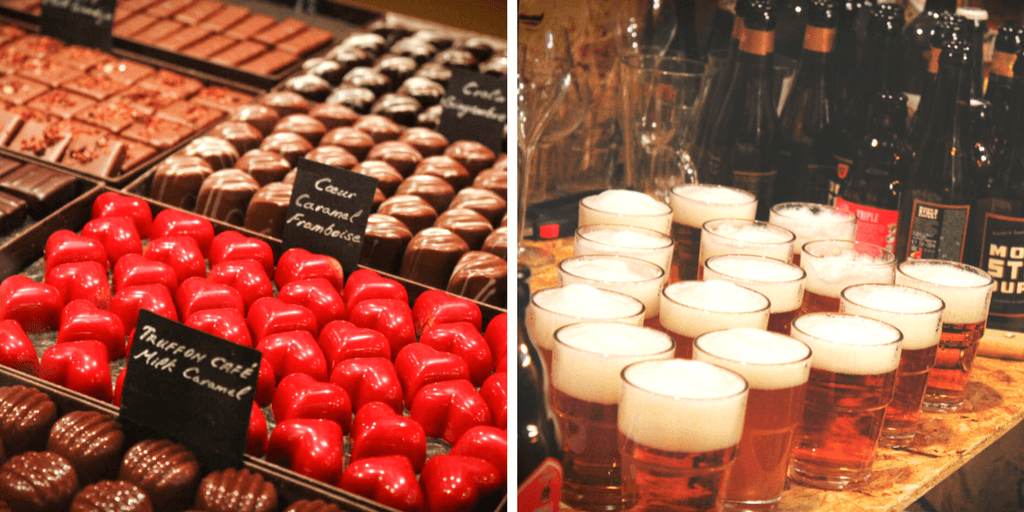
Name and Location: Brussels Beer Culture, Breweries & bars citywide
History and Significance: As the land of 1000+ beers, imbibing brews is interwoven into Belgian cultural fabric. Brussels lays claim to creating lambics and housing centuries-old brewers like Cantillon. Yet even neighborhood bars pour obscure regional drafts alongside Trappist varieties and abbey ales thanks to Belgium’s brewery density.
What to Expect: Beyond ubiquitous Stella Artois, visitors access living beer history sampling spontaneously fermented lambics at century-old breweries or joining a hosted pub crawl of locally loved watering holes where old regulars debate policies over brews. Tastings accompanied by perfect beer pairings like fine cheeses and charcuterie.
Visitor Information: Guided tours available. Historic brewery hours limited, bars open afternoon through late evenings. Public transit provides good brewery access. Tasting flights typically €8-15 euros per 6-8 glasses.
As the unofficial beer capital of the world, Brussels takes its brewing heritage very seriously. Trappist monk breweries dot the Belgian countryside just outside the city churning out what connoisseurs consider some of the finest beers. You can sample famous Abbey-brewed varieties like Chimay, Orval, Rochefort, and Westmalle right in Brussels.
In 2024, Cantillon Brewery – one of the last lambic beer producers left in Belgium – celebrates its 115th anniversary. Visitors can tour the working brewery and learn about the traditional spontaneous fermentation process that makes lambics so distinctive. Their new BeerCellar tasting room opening in 2024 will offer guests a more comprehensive beer tasting experience too.
Beer lovers visiting Brussels next year should also check out the new Bruparck complex opening in late 2023. It aims to bring together different facets of Belgian beer culture, gastronomy, tourism and innovation all under one roof. Visitors can learn about brewing history, sample craft beers, and dine at beer-focused restaurants.
Indulge in Belgian Fries, Waffles and More
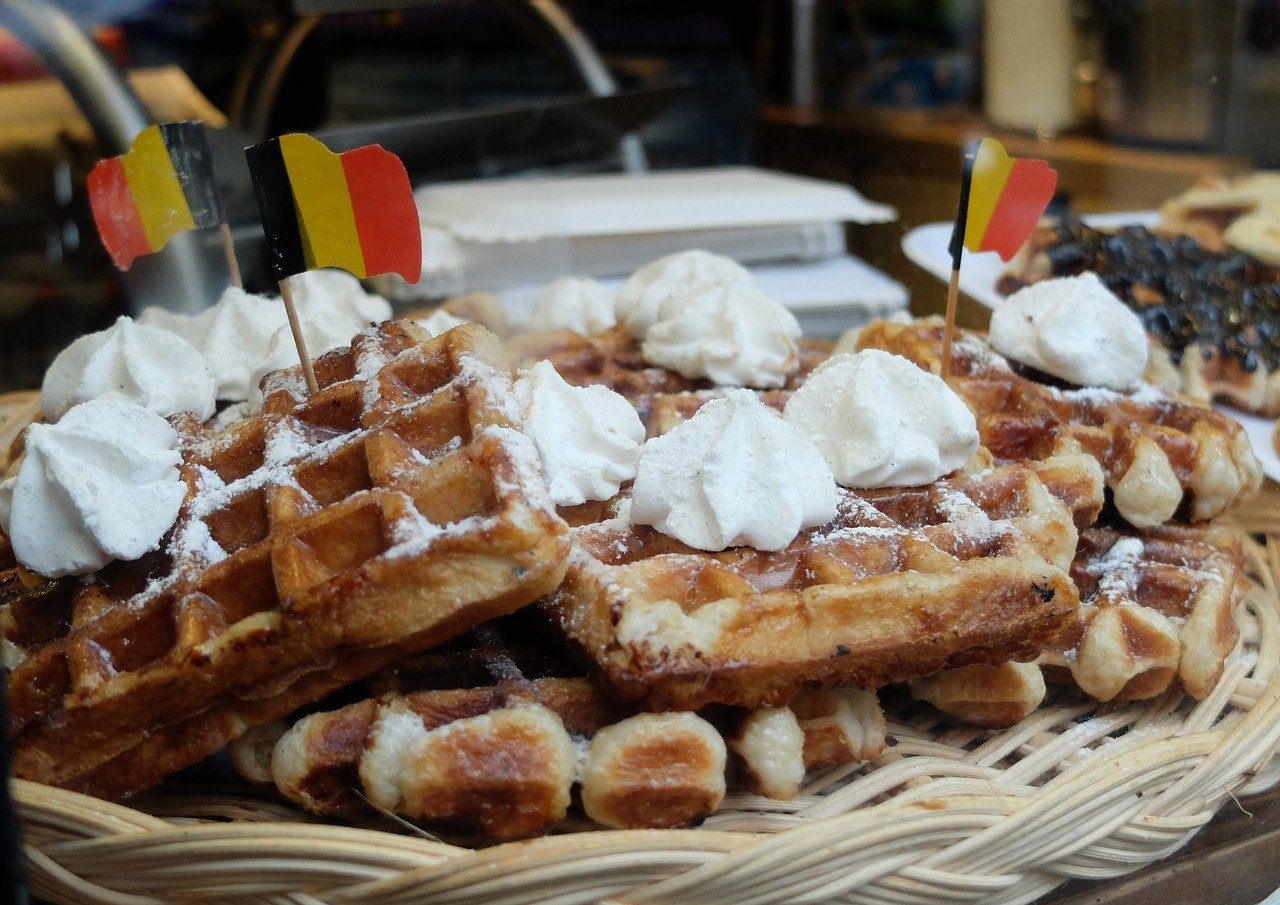
Name and Location: Belgian Fries, Waffles and Street Food, Available citywide at kiosks, friteries and restaurants
History and Significance: From golden Belgian waffles heaped with toppings to hot crispy fries smothered in sauces, Belgian street cuisine tantalizes tastebuds 24/7. These savory snacks trace origins to Belgium’s village fair and market traditions. Today they remain intrinsic to everyday food culture best enjoyed on the go.
What to Expect: In Brussels, sidewalk carts and specialty windows dish out piping-hot flavor bombs like twice fried Belgian fries, handmade waffles and sausages in rolls. The aroma alone screams indulgence. Taste and compare versions across the city’s late night quick bite spots.
Visitor Information: Most kiosks & restaurants stay open until 1-5am. Average prices €3-7 per hearty serving. Look for spots frequented by late night revelers. Cash only at some stands.
From Belgian fries to liege waffles… Brussel’s casual street food packs some serious flavor – and plenty of calories! Restaurants all over the city serve Belgian fries made from local potatoes fried twice in flavorful beef tallow or vegetable oil for the perfect crunch on the outside and fluffiness inside. Get yours topped with sauces and snacks ranging from curry ketchup to fried onion bits.
For the quintessential sweet Belgian street food, look for little waffle windows emitting clouds of delicious aroma onto the sidewalks. Crispy, chewy Liege-style waffles get their distinctive sweetness from generous chunks of pearl sugar baked right into the dough. Sandwich shops also get creative with Brussels’ beloved waffles by folding decadent ingredients like molten chocolate, chestnut cream or fruit jam inside.
And we can’t forget savory local snacks like steamed mussels dripping in creamy broth, twice-fried bitterballen potato croquettes, or the revolting but iconic surströmming – fermented herring in a can! Open with caution and have beer close by if you dare…
See Surreal Artworks at the Magritte Museum
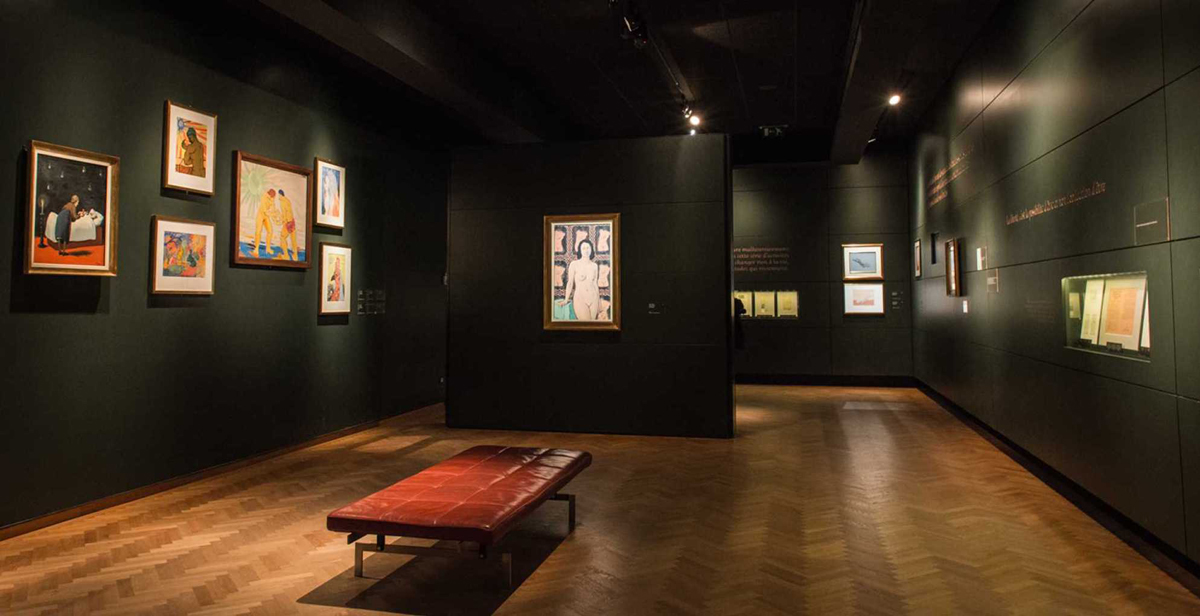
Name and Location: Magritte Museum, Place Royale 3
History and Significance: Housed in a grand 17th century building, this modern museum owns the world’s biggest Magritte collection spanning his prolific career from experimental beginnings to iconic surrealist Pop Art style. Some 200+ works create an unparalleled immersive experience into Magritte’s provocative imagination that shook trends.
What to Expect: The exhibits guide viewers chronologically through Magritte’s extensive portfolio of paintings, drawings, sculptures and films. Standouts include lesser known early works, commercial pieces, the humanly inaccurate Empire of Light series and his final painting. Audio guides aid understanding his complex conceptual works.
Visitor Information: Open Wed-Mon 10am-5pm. Closed Tuesdays. Adults €15 entry. Gets crowded, prebook tickets. Located at Place Royale in the city center. 1.5-2 hour visit ideal.
As mentioned before, the Magritte Museum next to the Royal Museums of Fine Arts is a must-visit for art lovers. With the largest collection of works by René Magritte anywhere in the world, it offers unparalleled insight into the Belgian surrealist painter’s unconventional style.
Spread across several floors of a grand neo-classical building, multimedia exhibits trace Magritte’s artistic progression from his early impressionistic paintings through the surrealist masterpieces he is best known for. Marvel at the mystery behind classics like “The Son of Man”, “The Lovers”, “Golconda” and “The False Mirror” up-close before venturing out to see real-life Brussels spots that inspired Magritte.
See the Atomium

Name and Location: The Atomium, 1 Place de l’Atomium
History and Significance: Constructed for the 1958 World Fair, the Atomium’s unusual architecture resembles iron crystal magnified 165 billion times. At 102 meters high with 9 connected steel sphere capsules, it immediately captured global imagination as a symbol of science, technology and progress. The unique structure is a Brussels must-see!
What to Expect: Visitors can journey through the Atomium ascending via escalators and elevators housed in the central vertical tube to access displays exploring architecture, design, Expo ’58 history and panorama views across Brussels from the upper spheres. An intriguing 30 minute audio tour is included.
Visitor Information: Located north of city center. Open daily 10am-6pm, longer hours in summer. Entry fees €15 adults. Metro line available but involves some walking. Guided tours offered in four languages.
Constructed for the 1958 Brussels World Fair, the Atomium still stands as a retro-futuristic emblem representing Belgium’s place in the Space Age. The massive hollow structure resembles an iron crystal magnified 165 billion times and towers over the north edge of the city.
Visitors can ride glass elevators up through the connecting tubes to the highest sphere overlooking Brussels and beyond. Inside is a museum tracing the Atomium’s past, present and optimistic future with new technology installations and an exhibit on Expo 58. Whether viewed from afar or explored up-close, the Atomium is an only-in-Brussels landmark not to miss.
Explore Brussels’ Multicultural Neighborhoods

Name and Location: Brussels Neighborhoods, Districts Throughout City
History and Significance: As a melting pot of Belgian cultures blended with sizable recent immigrant populations, Brussels features distinct neighborhoods celebrating diversity across multiple vibrant districts. Delving into historic quarters with restored facades, colorful fringe artist communities, bustling North African areas and elsewhere rewards intrepid urban explorers.
What to Expect: Beyond medieval sights, visitors can explore the hip Dansaert quarter along elegant Rue Antoine shopping drag or working class Marolles packed with quirky personalities. Matongé offers lively African streetlife while upscale Uccle delivers stunning Belle Epoque architecture amidst trendy shops and eateries.
Visitor Information: Accessible year-round at your own pace. Metro lines provide neighborhood access but walking allows better immersion. Exciting to experience both day and night. Avoid interfering with residents’ private property.
In addition to all the medieval, Gothic and Art Nouveau architecture around central Brussels, several outer neighborhoods reveal the city’s cultural diversity through food, shops, street art and events.
The Matongé district transports visitors straight to the Democratic Republic of Congo with colorful murals, soul food restaurants, hair braiders, and music shops bumping the latest Afrobeat tunes. Istanbul comes alive in the St. Josse neighborhood’s Turkish tea rooms, spice shops and assortment of kebab restaurants.
And thanks to generations of Italian immigrants, Ixelles has one of the most authentic Little Italy vibes outside of Italy! Brussels’ multicultural character shines through across many diverse neighborhoods for visitors to discover.

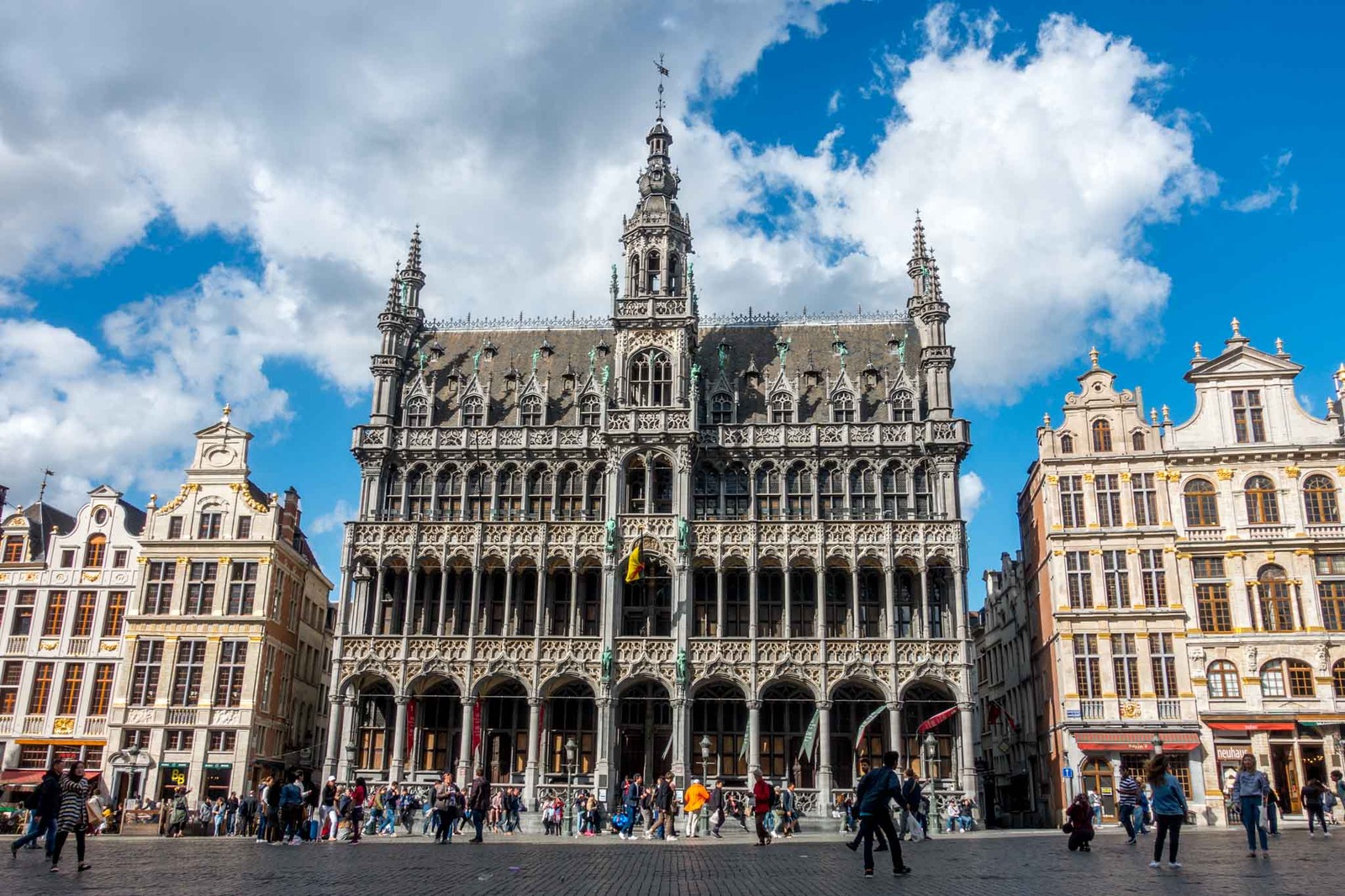
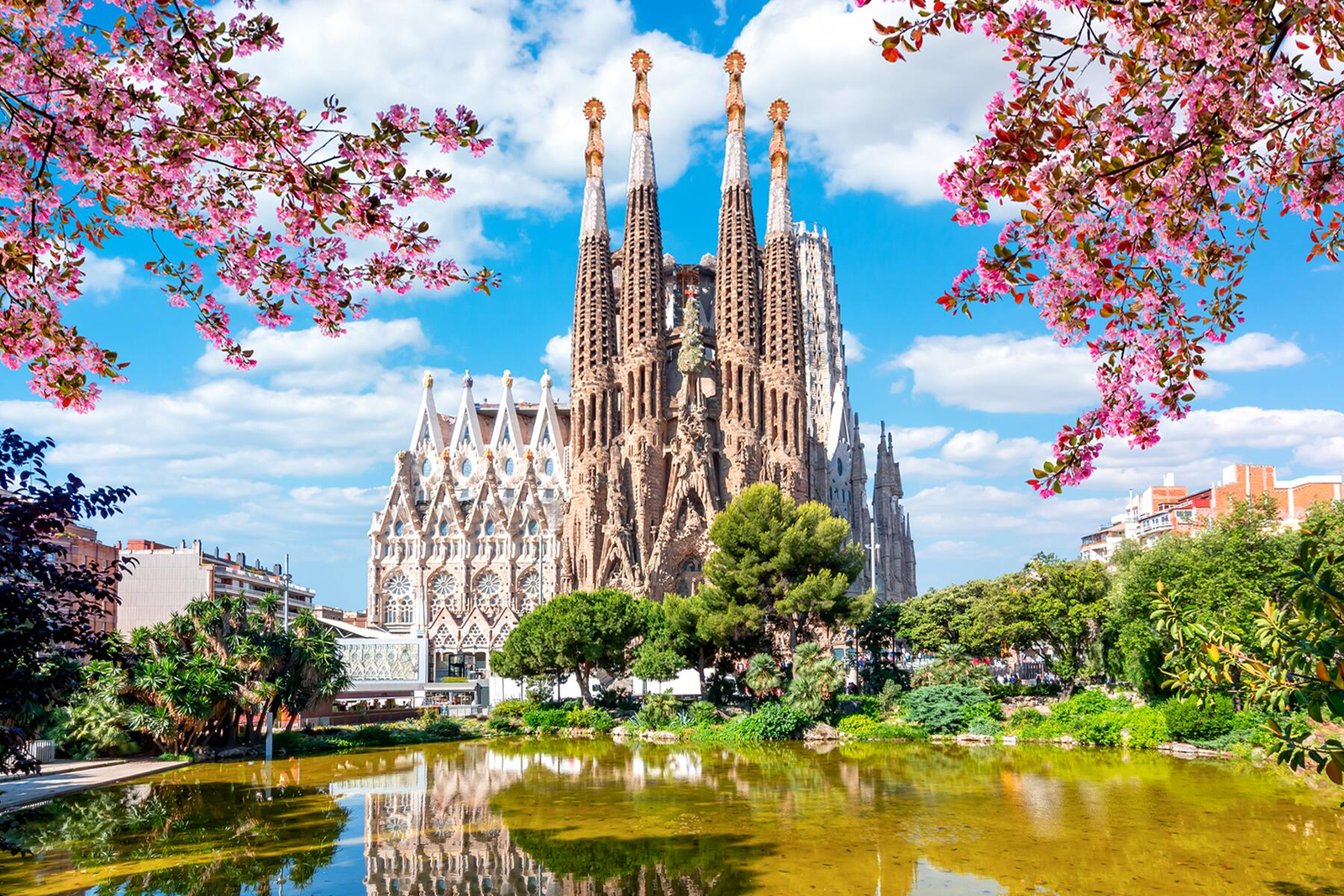


Join the Conversation